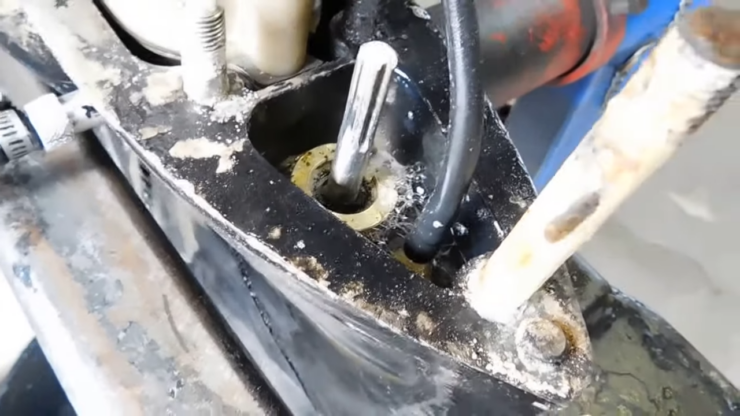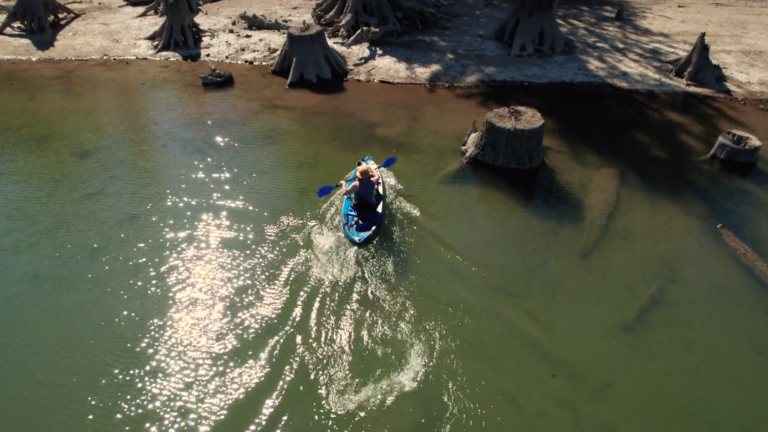Ever get excited about taking your boat out for a cruise, only to find its gears not budging? Well, it’s probably because your Mercury Outboard’s Shift Shaft is misaligned.
Which begs the question, “what botches your Mercury Outboard Shift-Shaft Alignment?”
The problem is most likely due to a difference in the gear setting of both units (upper or lower) or the accidental turning of the shift rod. The solution isn’t that technical. Ensuring both units are in the same gear and fine-tuning the gear shifts should solve these.
But don’t worry!
We’ve put together a complete guide on the know-how of your Mercury Outboard Shift-Shaft. Here we’ll talk about the entire shifting mechanism (shifting the shift rod to each gear). We even have a few tips and solutions to the alignment issues.
Let’s get to it!
Table of Contents
ToggleProper Shift-Shaft Mechanism for Mercury Outboard

Now, before we get into the details you must think about the Mercury Outboard in 3 sections. Those should be the Upper Unit, Middle Unit, and Lower Unit.
This is also known as the Outboard Powerhead. It essentially is made up of combustion engine components. This is where the Mercury Outboard is regarded as one of the top marine carburetors. Normally, all of these units are perfectly aligned. The Shift Rod perfectly fits with the Shift linkage, allowing the joining bolt to fit in.
The Upper and Lower unit is held together by the Shift-Shaft and the Shift-Linkage. The Shift Shafts are responsible for the forward, neutral, and reverse Gears of the boat. The Shift Shafts work in unison with the transmission dictating the boat’s direction. It works together with the transmission, dictating the propeller shaft’s rotation. In Layman’s terms, the shift shaft is the essential cog that makes the boat move forwards or backward.
Whenever the transmission throttle is pushed forward, the shift shaft moves forward. As the upper unit switches to forward gear, the shift shaft turns the lower unit into forwarding gear. When the throttle is pushed into neutral, the shift shaft allows the top and bottom units to switch to neutral gear. This stops the propeller shaft from rotating. The rotation is reversed when the gear goes to reverse.
When the Shift-Shaft is misaligned, the transmission control gets jammed. This could be solved by unfreezing a boat’s steering cable. Apart from this, there are two other ways your Shift-Shaft could be improperly aligned.
Troubleshooting Shift-Shaft Alignment – 2 Issues Resolved
The most common cause of misalignment is a mismatch of gears between Upper/Lower Units. The other is the accidental Turning of the Shift-Rod.
But these problems can easily be solved by adhering to a series of steps.
There’s a reason for all the steps being sequential. You see if you don’t follow the steps sequentially, the chances of the perfect alignment reduces.
So, let’s go:
Problem 1: Mismatch Between Lower and Upper Unit

The Shift-Shaft won’t align due to the gears in the Upper and Lower units being different.
When assembling the Outboard, ensure the Upper and Lower units are in the same gear. Otherwise, the two units won’t fit perfectly.
This is sort of like a Jigsaw puzzle. You have to match the corresponding shapes with their respective holes.
Solution
The easiest way to do this is by disconnecting the Shifter Cables. Then move the Shifter by hand. It is important to note that it is difficult to do so by hand. But don’t get disheartened, it will budge after a while. Since you have to do it by hand, you have to take precautions. It’s best to wear protective gloves beforehand.
Now that your hands are well-protected, we move to the next step.
First, move the shift rod to neutral by lifting it and pushing it down. You should keep it in neutral gear because it doesn’t raise or lower the Shift Rod. This makes the fit easier as the elevation is stable.
Here are two tips that will help in achieving the best results:
Tip 1: You can check if the lower Gear is in neutral by seeing if the propeller shaft can freely rotate.
Tip 2: You can use the driveshaft to move the gears of the lower unit and see if it fits into place.
Problem 2: Accidental Turning of The Shift Rod

This problem is easily overlooked. You could ensure the same gear in both units yet still make this mistake.
This can happen with all the Mercury Outboard Series. It has been seen to cause issues with Mercury Verado and SeaPro. The problem here is precise (by millimeters). This happens when people take out the lower unit, they accidentally turn the Shift Rod.
The reason why most people miss out on this is that your gears will still work. Even if you botch the alignment, the gears will still be able to shift. You can only work it out to see if there is a click when shifting gears. If everything is fitted in perfectly, the shifting of the gears will be seamless.
There is a reason you need to ensure a perfect alignment. It’s because the slightest strain in the fit there might lead to added strain in the Gearbox. This may result in the entire gearbox jamming up suddenly.
Solution
The solution to accidentally turning the Shift Rod is simple. You have to go through the good old-fashioned process of trial and error!
The alignment may be off by a few millimeters. To rectify this you need to actually turn the propeller shaft and simultaneously shift gears. If you hear a click, it means the fit is slightly off.
Then, you set it back to neutral gear (of both units). Now, slightly raise (in case of Forward-Gear) or lower (in case of Reverse-Gear) the Shift Rod. You need to keep doing this until you don’t hear any clicks in the shifting of gears.
To summarise, these are the two most common problems.
We hope this article came in handy for resolving these issues when it comes to your outboard.
FAQs

Is my Outboard’s Lower unit in Neutral Gear?
This depends on how your Lower Linkage is set up. You can easily find out by using a pair of pliers/vice grips to turn the shifting shaft that comes out of the lower unit or by turning the driveshaft until you know the lower unit is neutral.
How do I adjust my outboard shift cable?
Ans: First, loosen the throttle cable adjuster jam-nut with wrenches. Next, extend or contract the adjuster until the cable moves the throttle to the idle position. Then, push the control lever forward to the “Forward idle” position. Finally, pull the control lever back, through neutral, into the reverse idle position
What is the source of the Grinding Sound of my outboard?
The source of the grinding sound in your outboard motor could be a number of different things. It could be related to the starter motor, which is the component responsible for starting the engine.
A worn-out starter motor can cause a grinding sound when it is engaged. Additionally, it could be related to the flywheel or other internal components inside the engine.
If the grinding sound persists, it is important to have a professional inspect the engine to identify the source of the problem and make the necessary repairs.
How does a shift shaft work?
A shift shaft is a mechanism in an outboard motor that controls the shifting of the gears in the lower unit of the motor.
The shift shaft works by transmitting rotational motion from the gear lever to the lower unit of the motor, where it engages the gears and causes them to shift.
How do boat shifters work?
Boat shifters are used to control the speed and direction of a boat by controlling the engine. They work by connecting the engine to transmission, which then transfers the power from the engine to the propellers.
The shifter is connected to the transmission via a linkage that is operated by a lever on the shifter.
When the lever is moved, it engages the transmission and changes the position of the gear.
Depending on the type of shifter, this can either change the speed and direction of the boat, or just the direction. The shifter also has a neutral setting, which disengages the transmission and stops the boat.
What controls the steering on a boat?
The helm is responsible for converting the rotating motion of the steering wheel into a push-pull action on the cable.
This cable directs the rudder to move left or right to steer the boat in the skipper’s desired direction. Most helms are rotary and use gears to move the rudder.
Take Away
So, now you know the problems behind imperfect mercury outboard Shift Shaft alignment. Hopefully, you have realized how to solve the misalignment
We hope you could solve your problem and fix your Outboard.
Let us know which solution you used to fix your Mercury Outboard. Till then, stay safe and good luck!
I’m Liam Jackson, the proud owner and driving force behind KayakPaddling.net. Born somewhere in the expansive beauty of the United States, I’ve nurtured a lifelong passion for kayaking and fishing that has led me to explore the far corners of our nation’s waterways.
Related Posts:
- 17 Best Trolling Reels 2024 - Enjoy your Fishing Adventure
- 15 Best Baitcasting Reel Under $100 2024 - Improve…
- 16 Best Kayak For Beginners 2024 - Kayaking Adventure Gear
- Boat Won’t Go Over 2000 RPM Under Load - Reasons Explained
- 16 Best Kayak Fishing Paddles 2024 - Affordable Fishing Gear
- 10 Best Power Tilt and Trim Fluid Alternative 2024 -…












